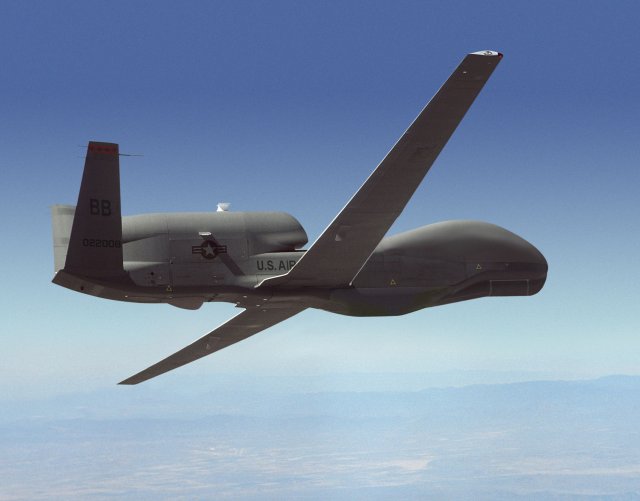| a | |||
| |
|||
World
Aviation Defense & Security News - United States |
|||
| US Air Force expands its RQ-4 Global Hawk Fleet | |||
The
U.S. Air Force has awarded Northrop Grumman Corporation a $354 million
primarily firm-fixed-price contract to expand their RQ-4 Global Hawk unmanned
aircraft system (UAS) fleet by three aircraft. |
|||
 USAF's RQ-4 Global Hawk Block 10 |
|||
Global Hawk operates multiple sensors simultaneously to gather intelligence, surveillance and reconnaissance (ISR) data. The new aircraft are Multi-INT models that carry sophisticated imaging and electronic signals sensors capable of collecting multiple types of intelligence from high altitudes for up to 32 hours. The contract also includes retrofit kits to add Airborne Signals Intelligence Payload (ASIP) sensors into two of the existing RQ-4, providing them with Multi-INT capability. ASIP is an advanced ISR collection sensor also built by Northrop Grumman. The aircraft will bring the Air Force RQ-4 fleet size to 37 in 2017. The ASIP retrofit kits are scheduled for delivery in late 2016 and in 2017. All RQ-4 UAS fuselages are built at Northrop Grumman facilities in Moss Point, Mississippi, with final assembly and acceptance testing is conducted in Palmdale. "Northrop Grumman is proud that the RQ-4 Global Hawk has become an indispensable ISR resource for the Air Force. These new systems will provide further opportunities to keep our warfighters safe," said Mick Jaggers, Global Hawk program manager, Northrop Grumman. "Even as Global Hawk flight hours increase each year, we are striving to reduce the overall operating cost of the system for the Air Force," Jaggers added. The Air Force's commitment to putting more Global Hawks in the air and our dedication to meeting affordability agreements for production and sustainment ensure that this vital asset will remain sustainable and viable for many years." |
|||
US Air Force expands its RQ-4 Global Hawk Fleet
- Posted On
















